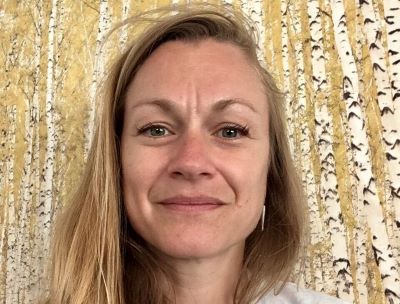What do computer programming, wireless encryption, and modern surgery for removing cataracts all have in common? They were all pioneered by female engineers – Ada Lovelace, Hedy Lamarr and Patricia Bath, respectively.
With famous women in popular culture, like Marissa Mayer, the first female engineer at Google and now boss of Yahoo! and Mary Jackson, aerospace engineer at NASA who was featured in the movie Hidden Figures, inspiring women to follow a career in STEM subjects, we’re starting to see a positive trend towards women in engineering.
The latest government workforce data, as of the end of June 2022, continues to show an increase in the percentage of women making up the Core-STEM workforce. This percentage has climbed from 26.6 per cent in December 2021, to 26.9 per cent. During 2022, over 6,200 engineers and technicians became professionally registered with the engineering council. And as of 2022, there are now 531,700 engineers in the UK, an increase of 78,900 from 2010.
Although the statistics of women in the Core-STEM workforce is on the upward trend, we’re still a way off equal representation and more can still be done within the education system to encourage girls into a career of STEM.
While I haven’t worked in the engineering field all my life, I firmly believe that more should be done to encourage women into the sector. I believe the education system should focus on creating exposure to STEM/software engineering (SE), helping women of all ages understand exactly what software engineering is, how vast the industry is and busting a few of the myths/misconceptions that might make some women feel reluctant about stepping into a career in the field.
My career started in 2014 as an associate lecturer at the UCL Institute of Education, where I was researching sleep and ADHD, and lecturing on psychology and neuroscience.
After six wonderful years at UCL, I moved onto Bristol University where I was a senior lecturer looking into the fascinating research of sleep and ADHD. It was there I began collaborating on the development of tech-based interventions for ADHD. I became more and more interested in the technology itself and so retrained in SE. I liked the idea of working as a consultant software engineer because it combined my developing tech skills with prior capabilities in communication, user-based research, user-centred development, and design thinking.
After many happy years of lecturing psychology and neuroscience, I realised that the pace and priorities of academia were no longer for me.
My journey has taught me that not everyone is designed to fit in a box and do just one thing for the rest of their lives, it’s important to change and get out of your comfort zone! Since switching my career roadmap and moving into the engineering lane, I’ve not looked back (although I will always have a deep love for anything neuroscience!). I’m now determined to encourage the next generation of women to explore a career in SE too.
During my software engineering training, I heard a lot about the industry being male-dominated and reports of women feeling side-lined. There is no doubt that we’re working within a male-dominated field, but I have found the entire community to be nothing but encouraging and proactively helpful. Sometimes there may be a quick assumption that as a woman you are there to ‘make things look pretty’ (which to a certain extent is true in my case), but it is not my experience that is in any way pervasive. The tech community to me feels collaborative at its core; interesting people, interested in the same topic, and actively willing to help each other out where they can. Perhaps I have been incredibly lucky in where I have worked.
I joined Daemon in February 2023, where I currently wear two hats. Firstly, as a consultant software engineer (CSE), where I have been contributing to an interesting project at Marvel Stadium in Melbourne, Australia, as a frontend software engineer. Using AWS Just Walk Out (JWO) technology, we have developed the first JWO food and beverage shop, in which AFL fans tap in with their card, pick the snack they’d like and just walk out (the money is automatically deducted from their bank account). Specifically, my role has been to help with the look and feel of the user interfaces for the receipt portal for customers and the refund portal for shop assistants.
The role of a CSE is a particularly interesting one, as it involves listening to the client’s description of their needs, understanding, and translating their needs in terms of technological function and capacity, and producing a system that meets those needs. To a certain extent you must also interpret and attempt to satisfy the desires of the client’s own customers.
Secondly, I contribute to our ‘Our Impact’ North Star, looking at our societal impact and sustainable working practices (ESG). This role involves liaising with people across the varied working groups within Daemon, reviewing our current practices and galvanising interest in ESG. In the coming months, it will involve brain-storming initiatives to improve our current ways of working with respect to our wider impact and assisting in their implementation.
For anyone looking to work in the industry, my advice would be to just go for it. Start with some free online coding courses (of which there are a lot!!) and start making projects. You’ll quickly learn which part(s) of the general tech stack (frontend, backend, testing, API, database, security) you enjoy the most, and if you’re like me, it’ll quickly become addictive!
Join hackathons, go to meetups, find local Women in Tech groups if they exist. The community is incredibly engaged and encouraging; if you reach out, you’ll quickly find yourself embedded.

Fran Knight, Consultant Software Engineer, Daemon











National Gas receives funding to develop Gravitricity underground hydrogen storage system
One single rock salt mine - Winsford - has 23 <i>MILLION </i>cubic metres of void and even allowing for 10% of that void set aside for hazardous waste...